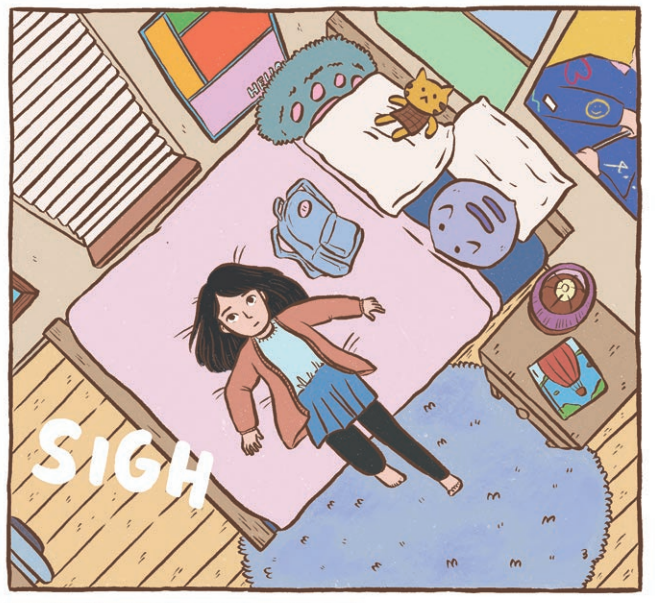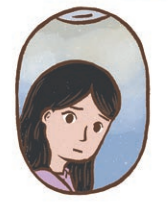Here’s another small panel from my upcoming graphic novel. I chose this shot because I wanted to show two characters getting into the car, but in a specific and interesting way. Instead of having the camera directly facing them getting in, I used this angle to show the face of the driver as well. Of course, I could have just had the driver in the foreground and the two in the background, but just as in film, you have to make that decision of which one you’d prefer and what helps tell the story.
Layer these kinds of angles and vary them from panel to panel to keep the art engaging and to tell a secondary story through the art, one that doesn’t have to use words to tell what’s going on.
Storytelling is Storytelling.
The last three points have focused mainly on the art, but I also wanted to highlight the similarities for writers as well. I’ve been practicing screenwriting, and just like in any story, the principles of writing still stand. Storytelling is so similar across all the formats, whether that’s film and graphic novels, or musical theater performances! The execution may be different, but the core content structure stays the same.
Graphic novels are written as scripts. Just like in screenwriting, you have scenes, characters, and sometimes even directions if you wish! Because I’m both writing and illustrating my books, I don’t have to communicate with a future artist to collaborate on the book. This means my scripts are typically very bare minimum, with just enough information needed to understand what’s going on with dialogue and the plot.
What I personally find fascinating in films is those scenes where the dialogue feels so real. Good writing, combined with talented actors, directors, and the whole team make for an Oscar-worthy film. Similarly in books, the writing has to hold up for the characters to feel alive, paired with the visuals, pacing, and the whole publishing team bringing the book to the final stage.
I re-read my dialogue out loud as though I’m an actor practicing my script. This helps hone the words to feel like something the character would actually say.
Beyond the spoken words, graphic novels have a chance to play around with narration, labels through the art, and other insightful ways the reader can pick up tidbits.
Another aspect of this writing is obviously the plot itself! A strong story is, as obvious as that sounds, essential for a strong book. Studying the fundamentals of storytelling has helped me improve from my first book to now the seventh book I’m working on.
Final Thoughts: Pick Your Format!
Film and graphic novels may be two different formats and mediums, but they do share the idea that you can tell the story visually. Because graphic novels for younger readers are a few hundred pages at most, if you add in the pauses, the big stunning visuals that span a whole two page spread, etc., you might not be able to tell as detailed of a story as you’d like. This is where you as the creator must decide whether or not graphic novels are the right format for the story.
A SKY OF PAPER STARS was absolutely meant to start as a graphic novel. If it ever got adapted into a film, I’d have to add more to the plot for it to hold up, but for the ~300 pages within the book, it’s more than enough. Whereas in another case, I was working on a book that just simply required too much development in the characters, with multiple subplots. I’ve decided to pursue this story as a prose novel instead of a graphic novel, because eliminating the visual element allows me to more efficiently fit in more information onto the limited pages.
So these are all considerations to have as you think about your graphic novel.
Here are the films and TV shows I watched in the last few weeks. I won’t tell you my opinion of each of them, but I will say that I didn’t like them all ha:
I learned a lot, especially from re-watching La La Land. It was so useful for me to see how the director chose to set up the scene, from the establishing scene to the sequence of events. Sometimes, the scene will be one take — you can achieve a similar effect in graphic novels, too. There is one book I always revisit where the two pages are just two characters dancing, and you can visually see the passing of time without the constraints of any panels, simulating filming something in one take. And the use of color in films, how they chose to include montages for certain beats in the story but really expand upon other ones in a longer dialogue between the characters… all of these go hand in hand for graphic novels, too.
The next time you are stuck on your graphic novel, watch some films and study how the story unfolds! It just might inspire you in your writing and drawing.
Alright, that’s all folks! Happy creating :)






